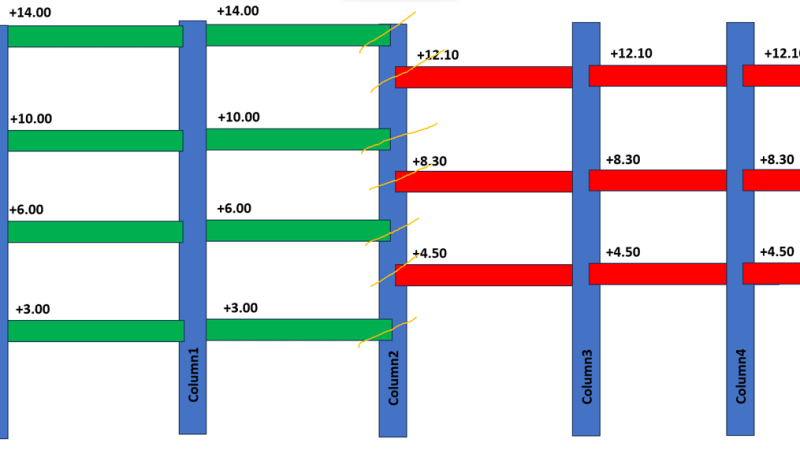hi everyone, I was working on a job in which there are 2 types of building that is going to be held by one column. They both were adjacent to each other and were connected structurally.

So, as you can see, both of the building have different slab elevation. My question is:
1. I modelled the building using ETABS, should I divide column2 into 7 segments while column1 into 4 segments and both column3 and column4 into 3 segments?
2. Will there be 7 diaphragms?? That is divided by the different elevation of the slab?
3. Could you possibly do this analysis? I mean, there are 2 different building with different elevation in each floor but it is going to build adjoin to each other. Should you do the analysis as an idividual building or as a adjoin building? >> I think I need to prioritize checking on as an individual building, because adjoining it with other building will increase it's stiffness, therefore an adjoining building will be able to have SMRF with more capacity than an individual building.
4. Lemme know if you have any other thoughts
Thank you

So, as you can see, both of the building have different slab elevation. My question is:
1. I modelled the building using ETABS, should I divide column2 into 7 segments while column1 into 4 segments and both column3 and column4 into 3 segments?
2. Will there be 7 diaphragms?? That is divided by the different elevation of the slab?
3. Could you possibly do this analysis? I mean, there are 2 different building with different elevation in each floor but it is going to build adjoin to each other. Should you do the analysis as an idividual building or as a adjoin building? >> I think I need to prioritize checking on as an individual building, because adjoining it with other building will increase it's stiffness, therefore an adjoining building will be able to have SMRF with more capacity than an individual building.
4. Lemme know if you have any other thoughts
Thank you
